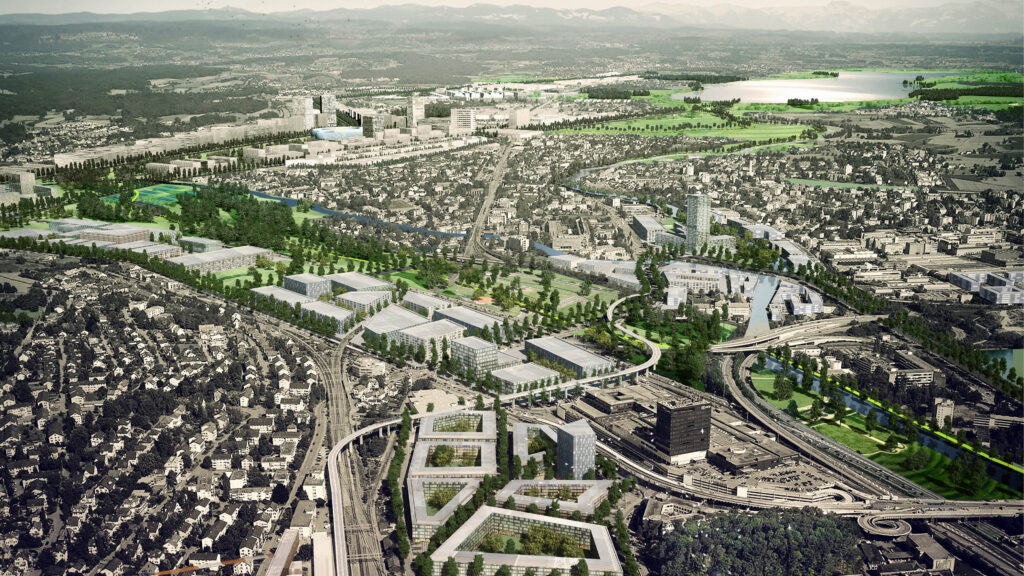
November 7, 2025
1877 Group Crocodile
1877 Group Crocodile
Location:
Glatt Valley, Zurich, Switzerland
Project Phases:
Initiative Project since 2008
Landscape Architecture:
Studio Vulkan (formerly Schweingruber Zulauf Landscape Architects)
Architecture:
Boltshauser Architekten, EM2N, Frank Zierau, Pool Architekten
Details:
Glatt – Identity Beyond the City Core
The original Glatt Valley, with its village-based structures nestled in a cultural landscape northwest of Zurich’s city center, has undergone significant transformation due to large-scale infrastructure investments in recent decades. The expansion and densification of formerly independent village centers have produced an increasingly homogeneous and spatially indistinct blend of city and landscape – a patchwork of built and unbuilt spaces lacking clear spatial hierarchies.
In its current form, the typology of the suburban city-landscape appears to have reached its limits – at the continued expense of a fragmented and increasingly eroded natural landscape. In response, the Gruppe Krokodil proposes an alternative narrative: envisioning “Glatt” as a coherent urban entity – an uninterrupted urban continuum stretching from Zurich Airport to the city of Uster.
Central to this vision is the treatment of remaining open spaces. The study advocates for the restriction of development to the valley floor and the spatial organization of the urban fabric through a series of large-scale parks. These parks act as spatial anchors, providing the disjointed agglomeration with an overarching structure and a new legibility.
Despite often being viewed critically, agglomeration remains a successful and dynamic model of urban development. The coexistence of historic village centers, business parks, high-rise residential buildings, and restored river landscapes serves as a reflection of the “city of contrasts.” Yet this diversity of spatial and functional types is rarely perceived as an asset – largely due to the absence of integrative frameworks and guiding spatial strategies.
The proposed network of expansive parks introduces a new hierarchy to the diffuse urban landscape. Unlike the compact open spaces of traditional city centers, the parks envisioned for the Glatt city-region take their cue from regional parks found in neighboring countries – both in scale and ambition. They are conceived as landscape parks in the truest sense – not as romanticized nature images, but as productive, structuring, and identity-forming spaces.
These parks integrate and safeguard existing landscape resources, building upon the area’s inherent qualities. With differentiated programming – as zones for sport, energy, recreation, or nature – they establish a connective tissue that organizes the heterogeneous urban fabric, offers orientation, and enables new forms of urban identity to emerge.